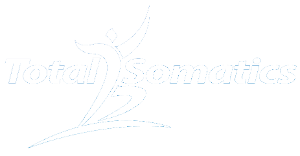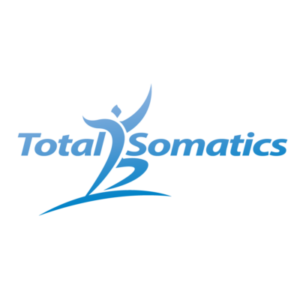Muscle Pain, Tension & Tightness – What can we do to Remedy the Issue?
With advances in technology, we have become skilled with modern scientific and medical discoveries. We are able to video conference people from the other side of the world at the click of a button. However we are a world becoming reliant on pain relief for the mushrooming incidences of musculoskeletal problems. What has happened? What can we do?
Empower, Enhance and Educate
The following statement by Benjamin Franklin is so true,
“An Investment in Knowledge pays the best interest.”
When we invest in something, we take time to learn, consider and then apply the information we have acquired. In respects to health, knowledge can provide a skill set to enhance and improve the quality of our life, by allowing us to pursue the activities we love to do.
Part of Somatic education is about teaching people to understand that pain is not the enemy as many have thought. The reliance on opioids and constantly relying on someone else to “fix” them takes away their ownership and accountability to their actions. Often over the years, people have been told various beliefs which are anecdotal, rather than evidence based. Dis-empowering comments from practitioners such as “you have the spine of an 80 year old” or “don’t bend or twist because your back is very fragile” has created fear within people. Comments such as these and similar have become deeply ingrained within a person’s subconscious mind and they will relive that appointment or comments made by their health care practitioner over and over again for years. As a result, they have developed so called ‘safety strategies’ to deal with their pain. These safety strategies are actually a hindrance. Their strategies include bracing themselves whenever they want to bend, twist or move generally. They may hold their breath in anticipation of a potential “fragile” or “80 year old back” hurting them. They begin to become less mobile and start reducing the activities they loved to do. Thus possibly creating sadness, frustration, anxiety, depression and hopelessness. As a result of these emotional feelings, muscle tension can increase within their back, neck, shoulders, jaw and abdominal region.
By listening to the dis-empowering, negative comments of a health care practitioner, the person may have spiralled into a state of anxiety and reliance on health care professionals. Overtime they may find they receive conflicting or multiple advice such as “strengthen your weak core,” “stretch your hip flexors,” “Lift with a straight back,” “surgery is your best option,” “Take these opioids,” “stop a certain sport/activity to reduce the incidence of your flare up or pain,” “use a foam roller or spiky ball every day to work the area” or “Change jobs.”
People may adopt these changes and yet find they are still having the problems. Short term opioids (for 7 days) can been be effective, however longer use has very little effect and creates dependency on the substance. Regular foam ‘rollering’ and spiky ball self massage can create hyper vigilance within a person. Just stop and think, how much benefit are your muscles receiving when you are inducing pain and loading body weight on a small area to “iron out” your muscles? Likewise how can stretching help release muscle tension and remove so called “knots?” Think about a piece of string with a knot in it. If you stretch the string, will the knot disappear? NO! The knot is tighter than before. Plus either side of the knot had been tugged and pulled beyond it’s comfort range. So how can stretching release tension and tightness when the muscle contraction is dictated by the commands from your brain? Over the years, these beliefs have been drummed into society and without the general public stopping and questioning them, many health care professionals have created a population reliant on being ‘fixed’ or feeling overwhelmed with their health.
 There is good news though! When we bring somatic education in for a client and teach them how to enhance their health and empower them with knowledge and skills, it creates huge changes, improving their quality of life. How?
There is good news though! When we bring somatic education in for a client and teach them how to enhance their health and empower them with knowledge and skills, it creates huge changes, improving their quality of life. How?
Turning up the Tension
Have you stopped and noticed how you and others move? As I mentioned at the start of this blog, the advances in technology are fantastic, yet they have created a more sedentary lifestyle and habitual postures are forming, such as being slumped for hours in front of a computer. Over time our ‘thermostat’ for tension and rigidity has been gradually increasing. Subconscious actions, behaviours, mindsets and movements have created very tight, tense bodies and minds. The statistics for anxiety, depression and back pain are rising every year. What can we do?
"Motion is lotion."
When we move, we are stimulating blood and lymph around our body, we are increasing fresh oxygenated blood to our muscles, tissues and cells. We are allowing our muscles to notice how it feels to lengthen and release pent up tension. The natural endorphins increase. The happy hormone serotonin is released. Our bones are able to enjoy movement and roll around or glide within their joints. As a Somatics educator I am constantly encouraging people to start moving, so they can sense and feel their body again. As a result they feel revitalised, refreshed and recharged. Movement is active and involves the brain. Somatics teaches you how to allow your body to fully release tension and return to activities you love to do. You may question my statement and say that your case is different. Maybe you say it is a structural issue. Your muscles will reflect the state of your central nervous system. If you are tense, anxious, nervous to move, think your back will “go out,” hold your breath or brace yourself before and during movement, you will create a tighter body to live in. This will be impacting on your current state of pain and limited mobility, not the structural problem. In previous blogs I have discussed the findings on back pain and how people with structural problems can sometimes have no pain, whereas ones with no structural issues may have higher levels of pain.
There can be many factors associated with pain, muscle tension/tightness and lack of mobility.
To read more on the subject of mindset and pain check out my following blogs:
The Power your mind has over your body
How Emotions & Mindset can Influence Back Pain
The Total Somatics Approach to Health & Wellness Online Program at www.TotalSomatics.com continues to bring you the latest research, knowledge and skills within the areas of pain education, neuroscience, health and wellness. Strategies within the online program, via Skype consultation, in my classes or hands on clinically with me will notice that there are multiple layers to pain education and somatic awareness. I will teach you somatic movement, mindset, mindfulness, health and wellness tools to reduce pain, improve posture, increase mobility and allow you to return to the activities you love to do. From the material I write in my blogs as well as within my online program, you know that your body and brain are plastic or malleable. We have taught (even if it’s unintentional) our mind and body dis-empowering beliefs, stiff or limited movement, reliance on health care practitioners to tell us if we feel OK and have created a sense of fear around pain. So if we can teach ourselves poor habits, we know from the vast amount of evidence within the fields of pain science, neuroscience and neuropsychology, we can retrain our mind and body to start living with greater movement, develop a mindset less hypervigilant to pain and empowered with skills to practise anytime, anywhere. Removing the mindset of needing to be ‘fixed’ takes away the feelings of anxiety, having no control over your life and a level of frustration. You are back in the driving seat to improving your health.
Would you like to increase mobility, reduce pain, improve posture and return to the activities you love to do? Who wouldn’t? Join me and the thousands around the world that have found Total Somatics to help educate and empower them so they can self assess, self regulate and self care throughout their day.
I look forward to teaching these brilliant skills.
Take care,
Heidi Hadley xx
www.TotalSomatics.com












